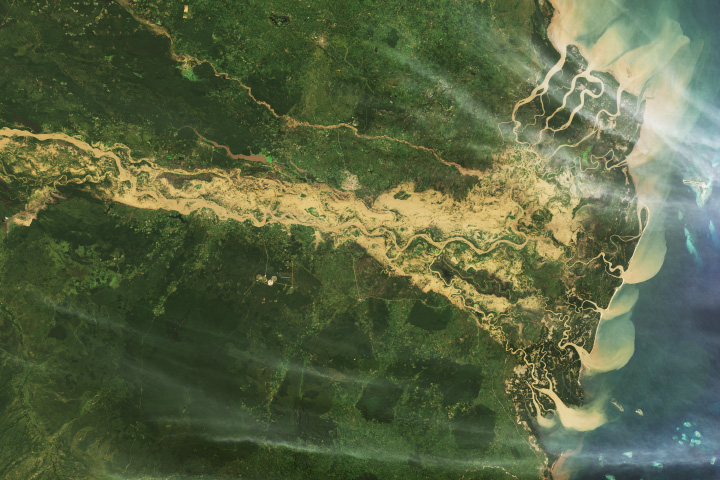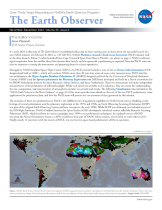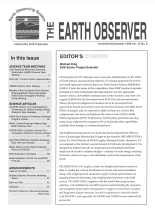- Home
- Missions
- Data
- Communications
- People
- The Earth Observer Newsletter




Recent Imagery
You will be directed to the NASA Visible Earth webpage when you select Images by Mission below, or click on the images at right that are randomly generated to represent four out of all possible topics.
The Earth Observer: Nov - Dec, 1998
In This Issue
Click title below to view page
SCIENCE TEAM MEETINGS
Joint Advanced Microwave Scanning Radiometer (AMSR) Science Team Meeting .... 3
EOS AM-1 Control Center Implementation ....... 4
CERES Science Team Meeting ..... 6
Minutes of the Fourteenth Earth Science Enterprise/Earth Observing System (ESE/EOS) Investigators Working Group Meeting .... 12
SCIENCE ARTICLES
CD-ROM Version of an Interdisciplinary Climatology for Global Change Climate Studies Is Now Available .... 27
NASA Earth Science Enterprise Education Program Update ..... 28
NASA, Central American Nations Sign Earth Sciences Pact ...... 30
SAFARI 2000: a Southern African FireAtmosphere Research Science Initiative ····· 31
New Polar Pathfinder Sampler Addresses Data Inter-use Concept ..... 35
Status Report on the Data Processing Portion of EOSDIS ..... 37
EOS Scientists in the News ..... 38
Global Validation of EOS LAI and FPAR Products ..... 39
ANNOUNCEMENTS
Letter to the Editor .... 11
Goddard Scientist Receives Nordberg Award ....... 30
Earth and Sky ....... 42
Calendars ...... 43
Editor's Corner
Michael King—EOS Senior Project Scientist
On December 22, Dr. Ghassem Asrar, Associate Administrator of the Office of Earth Science, announced the selection of winning proposals for end-toend small spacecraft missions known as Earth System Science Pathfinders (ESSPs). Under the terms of the competition, these ESSP mission proposals included not only instruments and data analysis, but also spacecraft, launch vehicle, and sa tellite command and control systems, and were cost capped at $90 M for the first mission and $120 M for the second mission. These principal investigator-led missions are to be developed from approval to launch in just three years (for the firs t mission) with little direct NASA oversight, and are expected to yield exciting new science that complements, but does not duplicate, the science from NASA's Earth Observing System (EOS). Furthermore, NASA policy precludes development of any mission that competes with or duplicates other capabilities available from foreign or commercial partners.
The Pathfinder Instruments for Cloud and Aerosol Spaceborne Observations- Climatologie Etendue des Nuages et des Aerosols (PICASSO-CENA), led by Dr. David Winker of NASA Langley Research Center, Hampton, VA, was selected as the primary second mission for full-scale development. It is designed to address the role of clouds and aerosol particles and their impact on the Earth's radiation budget-a balance of solar energy reaching the Earth, and lost to space, that ultimately controls the temperature of the Earth.
Read more...

